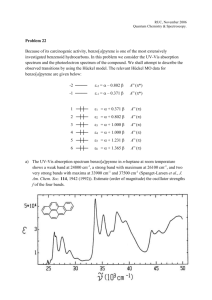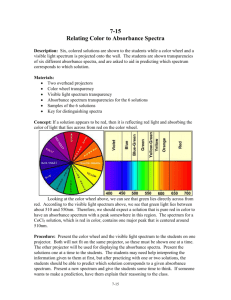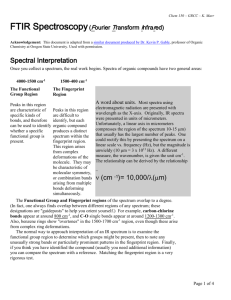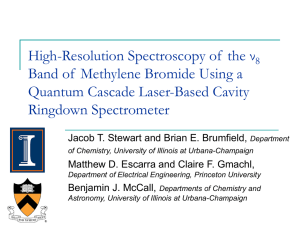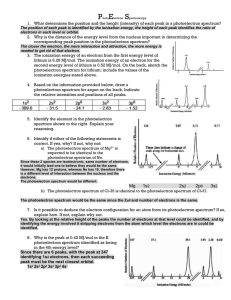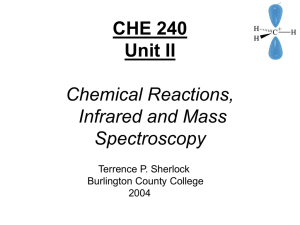Opgave 1
advertisement
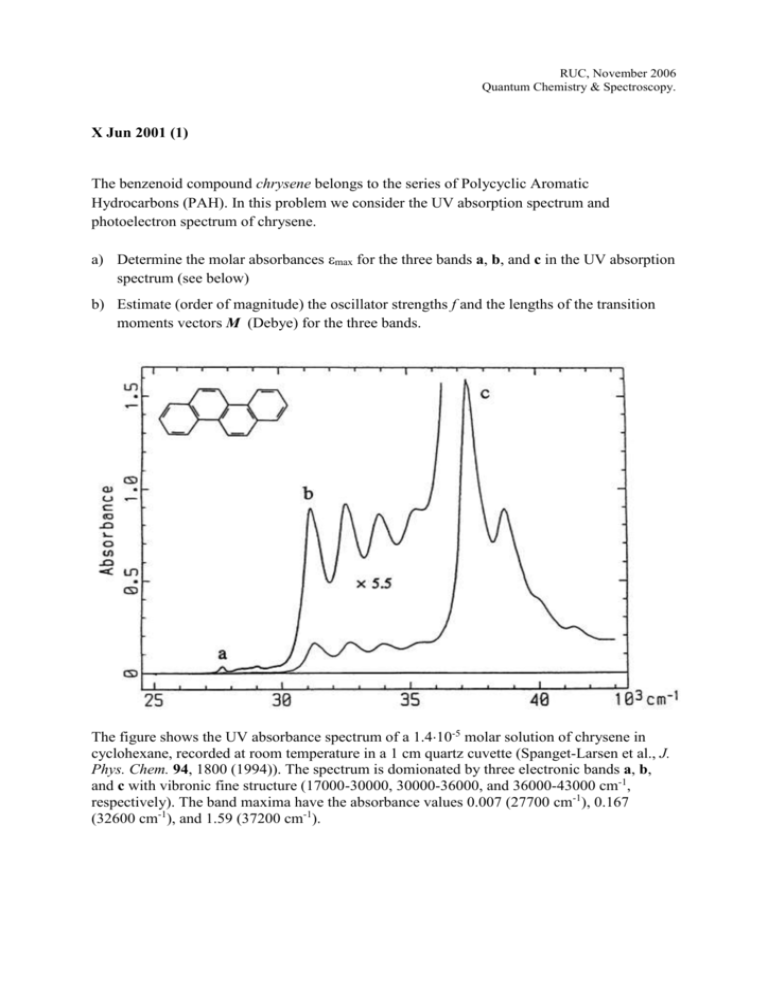
RUC, November 2006 Quantum Chemistry & Spectroscopy. X Jun 2001 (1) The benzenoid compound chrysene belongs to the series of Polycyclic Aromatic Hydrocarbons (PAH). In this problem we consider the UV absorption spectrum and photoelectron spectrum of chrysene. a) Determine the molar absorbances max for the three bands a, b, and c in the UV absorption spectrum (see below) b) Estimate (order of magnitude) the oscillator strengths f and the lengths of the transition moments vectors M (Debye) for the three bands. The figure shows the UV absorbance spectrum of a 1.410-5 molar solution of chrysene in cyclohexane, recorded at room temperature in a 1 cm quartz cuvette (Spanget-Larsen et al., J. Phys. Chem. 94, 1800 (1994)). The spectrum is domionated by three electronic bands a, b, and c with vibronic fine structure (17000-30000, 30000-36000, and 36000-43000 cm-1, respectively). The band maxima have the absorbance values 0.007 (27700 cm-1), 0.167 (32600 cm-1), and 1.59 (37200 cm-1). The -electron system of chrysene may be described by the Hückel model. The Hückel energies and the symmetries (irreducible representations) of the six highest occupied and the two lowest unoccupied molecular orbitals are given below: -2 = – 0.792 Bg (*) -1 ──── -1 = – 0.520 Bg (*) 1 ─┼┼─ 1 = + 0.520 Au () 2 ─┼┼─ 2 = + 0.792 Au () 3 ─┼┼─ 3 = + 0.875 Bg () 4 ─┼┼─ 4 = + 1.216 Bg () 5 ─┼┼─ 5 = + 1.286 Au () 6 ─┼┼─ 6 = + 1.540 Bg () -2 ──── c) What is the symmetry point group of chrysene? Determine on the basis of the Hückel data the symmetries of the four characteristic -* excited electronic states La, Lb, Ba, and Bb (Platt’s nomenclature). On the basis of symmetry arguments, what can be said about the transition moment directions for transitions from the ground state to the four excited electronic states? d) Suggest an assignment of the three observed electronic transitions to La, Lb, Ba, or Bb. You must account for the criteria applied in the assignment! e) Derive on the basis of the observed UV spectrum effective values of the Hückel parameter and the splitting parameter (cm-1 and eV). The last question in this problem deals with the photoelectron spectrum of chrysene. f) The photoelectron spectrum of chrysene in the gas phase at 150 ºC exhibits sharp peaks at 7.60, 8.10, 8.68, 9.46, 9.76, and 10.52 eV, corresponding to the six lowest ionization enegies I1 – I6 (Boschi et al., Discuss Faraday Soc. 54, 116 (1972)). These peaks can be assigned to ejection of electrons from the six highest occupied molecular orbitals. Derive by application of Koopmans’ theorem effective values for the Hückel parameters and corresponding to the photoelectron spectrum.
